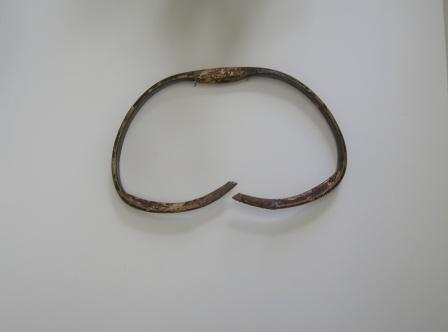the russian gal in my initial post was using a recurved horsebow similar to the turkish/mongol/korean/hungarian ones used for centuries on the open plains and steppes.
the bow extensions, sayahs, as well as the laminated horn and sinew construction provided extra power and allowed shorter bows to be pulled further, more suitable for use on horseback. the bows were also much harder to make, required constant attention to prevent them from twisting and taking a bad set. many took three years or so to build. a long bow could be made in less than a day. the arrows used by the turks for distance shooting contests were a sophisticated and aerodynamicly advanced, lightweight and barely feathered bone tipped version of an arrow, a far cry from the more deadly arrows used in war. turkish records indicate 950+ yards. Ref:
Linky
the one she is using in post #1 is as was noted likely of a low draw weight compared to top english bows, but the design allows it to hit above it's weight, so to say. in other words it's lighter pull over a longer distance gives the arrow similar energy as an arrow from a heavier bow over a shorter pull distance. it obviously has a rate of fire higher as well. modern ones with modern glues and materials are not as fussy as the older horn bows, and withstand weather a lot better.
old turkish bow, unstrung. lots of fun to string it. involves warming the limbs, careful pressure on both limbs, slight twists and pressures to prevent it twisting and a lot of strength, followed by further corrections to any twists in the bow. after use should be immediately unstrung and never left strung.
 Stringing an extremely curved horsebow
How to cheat when stringing a turkish bow
Stringing an extremely curved horsebow
How to cheat when stringing a turkish bow
the video shows using a kemend, a wide silk belt on a modern hungarian horsebow. the suggested videos on the right offer even more insight.
eastern europeans, mongols, arabs, persians, mongols, japanese, etc seemed to prefer lamellar armour with some plate, sometimes out of hardened leather, to the full plate of the west, possibly less protective but more manoeuvrable. also one reason given for the french losing at agincourt was the archers lighter armour allowing them to move around better, especially in the mud. those visors that kept out the arrows were horribly restrictive for breathing, let alone trying to see the little devil with the lead mallet trying to bash you in the helmet.
interesting comment on the goose grease. the tests i've seen are all unlubricated. modern armour piercing small arms rounds have a teflon coating to pierce kevlar vests, where similar un-teflonned rounds do not comes to mind.